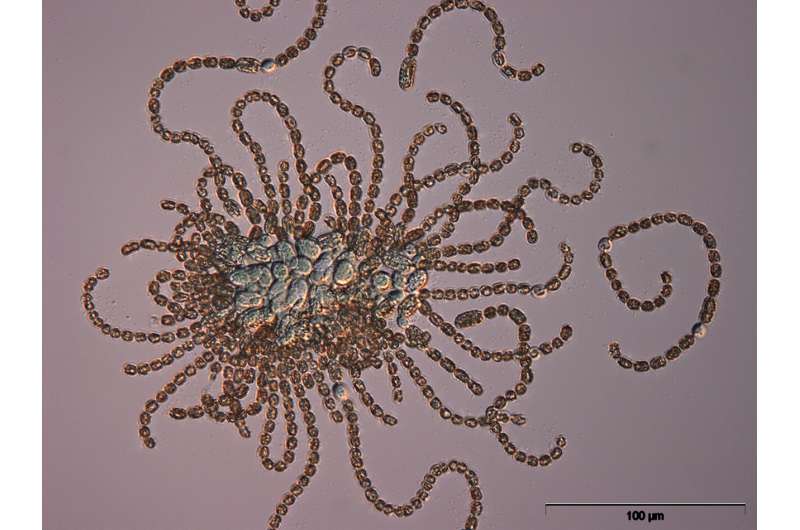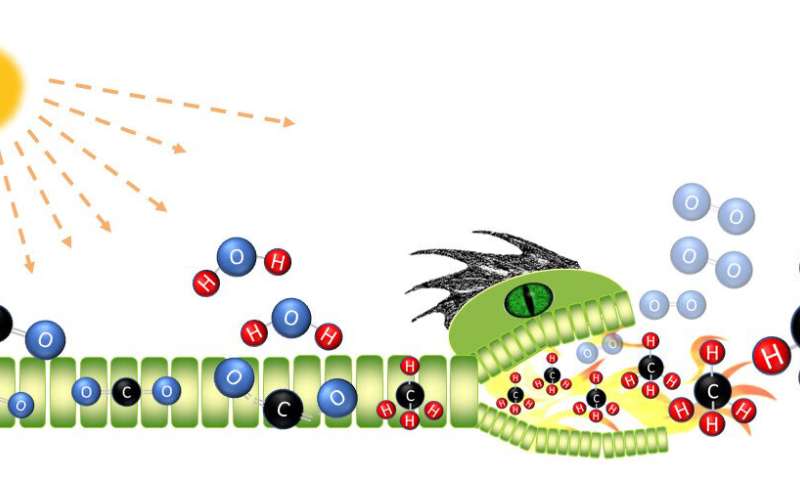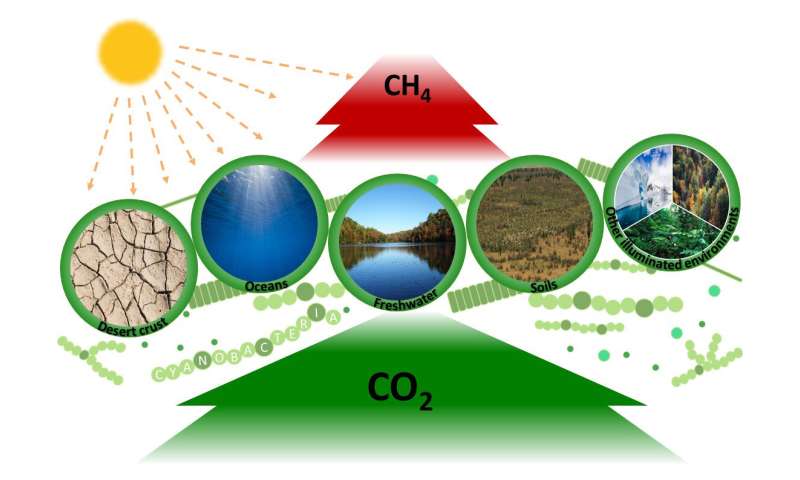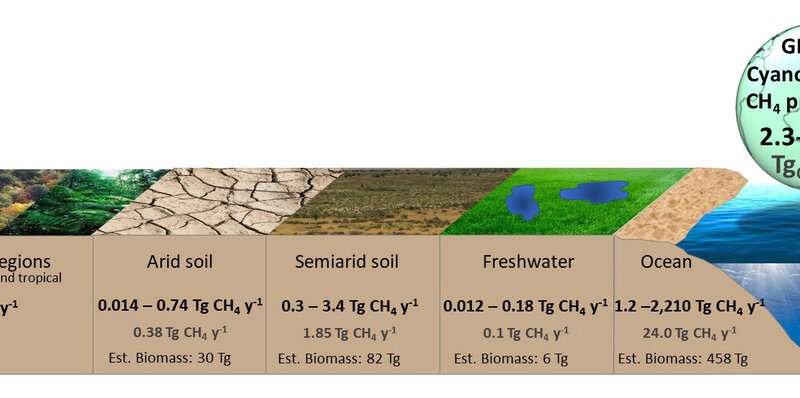January 16, 2020 report
Blue-green algae found to produce greenhouse gas methane

An international team of researchers has found that cyanobacteria (blue-green algae) produce the greenhouse gas methane. In their paper published in the journal Science Advances, the group describes tests they carried out with blue-green algae in their lab and what they found.
Carbon dioxide is a greenhouse gas, and anthropogenic emissions are partly responsible for climate change. Less well known is that there are other greenhouse gases that also contribute to global warming. One of those gases is methane, which is released into the atmosphere in a variety of ways, some natural, some from human activities. Research over the past decade has shown that methane is approximately 60 times more efficient at trapping heat in the atmosphere than carbon dioxide, making it a major concern. In this new effort, the researchers studied blue-green algae to find out if it emits methane.
In 2011, a team of researchers found that methane levels near the surface in Lake Stechlin in Germany were abnormally high. They also found that that methane levels in the water tended to increase with blue-green algae blooms—after studying their work, the researchers with this new effort wondered if blue-green algae was the source.
To test the possibility, the researchers collected blue-green algae samples from several sources and cultured them in their lab. Each was tested using a mass spectrometer for several days. The team found that all of the samples—two soil, five freshwater and six marine—produced methane. They also carried out testing to ensure that the methane was not being produced by another source, such as accompanying methanogenic archaea.
The findings by the researchers show that not only does blue-green algae produce methane, but it does so in both dark and light conditions, and in both oxygen-rich and oxygen-poor environments. However, they note that the emission of methane was lower under dark conditions. They also note that it is not currently possible to estimate the amount of methane being produced by blue-green algae globally, but suggest it should be a topic of research.
-

A graphical representation of cyanobacteria uptaking CO2 and emitting CH4. Credit: Dr. Mina Bizic -

A graphical representation of cyanobacteria from all environments on Earth converting CO2 to CH4. Credit: Dr. Mina Bizic -

A graphical description of methane formation by cyanobacteria from different habitats on Earth. The same data appears in the manuscript in the supplementary material Table S1. Credit: Dr. Mina Bizic, Dr. Danny Ionescu
More information: M. Bižić et al. Aquatic and terrestrial cyanobacteria produce methane, Science Advances (2020). DOI: 10.1126/sciadv.aax5343
Journal information: Science Advances
© 2020 Science X Network




















